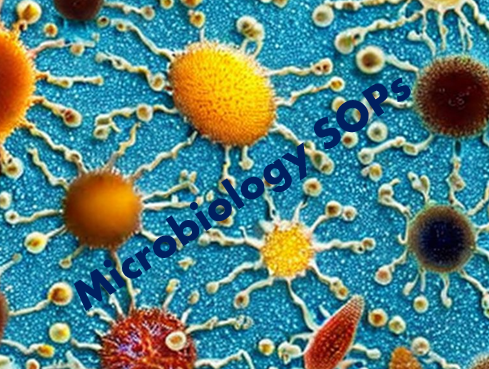Standard Operating Procedure for Bioburden Testing
SOP Version: 1.0
Purpose:
The purpose of this Standard Operating Procedure (SOP) is to establish guidelines and procedures for bioburden testing in the pharmaceutical manufacturing facility. Bioburden testing is performed to determine the level of viable microorganisms present in raw materials, intermediate products, or finished pharmaceutical products, in compliance with relevant pharmacopeias and other pharmaceutical references.
Scope:
This SOP applies to all personnel involved in bioburden testing activities within the pharmaceutical manufacturing facility. It covers the preparation, testing, interpretation, and reporting of bioburden test results, ensuring accurate and reliable assessment of microbial contamination levels.
Responsibilities:
Quality Assurance (QA):
Ensure compliance with this SOP and related procedures.
Provide oversight and guidance on bioburden testing activities.
Review and approve bioburden test results and reports.
Microbiology Laboratory:
Perform bioburden testing following approved procedures.
Maintain and calibrate laboratory equipment used for bioburden testing.
Document and report bioburden test results accurately.
Manufacturing Personnel:
Provide appropriate samples and documentation for bioburden testing.
Adhere to proper aseptic techniques during sample collection and handling.
Report any deviations or incidents related to bioburden testing to QA.
Procedure:
Sample Preparation:
a. Collect representative samples as per approved sampling plans and procedures.
b. Ensure proper handling and storage of samples to maintain sample integrity
c. Document sample information, including sample identification, date, and location.
Sample Extraction:
a. Prepare appropriate dilutions of the sample to achieve the desired microbial count range.
b. Follow the approved procedures for sample extraction, which may include homogenization, blending, or other techniques.
Enumeration of Viable Microorganisms:
a. Prepare appropriate culture media and sterilize as required.
b. Inoculate the media with the sample extracts using suitable techniques, such as spread plate or pour plate method.
c. Incubate the plates at the specified temperature and duration, as per the approved procedure.
d. Count and record the viable microbial colonies on each plate, considering colony characteristics and identification criteria.
Calculation of Bioburden:
a. Calculate the bioburden in the sample based on the count obtained and the dilution factor used.
b. Apply appropriate statistical techniques if necessary to account for variability and determine the final bioburden.
Comparison with Acceptance Criteria:
a. Compare the obtained bioburden with the specified acceptance criteria outlined in the pharmacopeia or other relevant references.
b. Evaluate if the bioburden is within the acceptable limits, considering the type of product and its intended use.
Identification of Microorganisms (if required):
a. If required, perform microbial identification tests as per approved procedures to determine the types of microorganisms present.
b. Use appropriate identification techniques such as biochemical tests, molecular methods, or other validated methods.
Data Evaluation and Reporting:
a. Review and verify all bioburden testing data for completeness and accuracy.
b. Prepare bioburden testing reports, including observations, results, and any necessary follow-up actions.
c. Submit the reports to QA for review and approval.
Abbreviations:
QA: Quality Assurance
Documents:
Sampling Plans and Procedures
Sample Collection and Handling Records
Bioburden Testing Records and Logs
Test Methods and Procedures
Bioburden Testing Reports
References:
[Insert relevant pharmacopeia reference]
[Insert relevant pharmaceutical industry guidelines or standards]
Note: The references should be specific to the applicable regulations and guidelines in your region.
